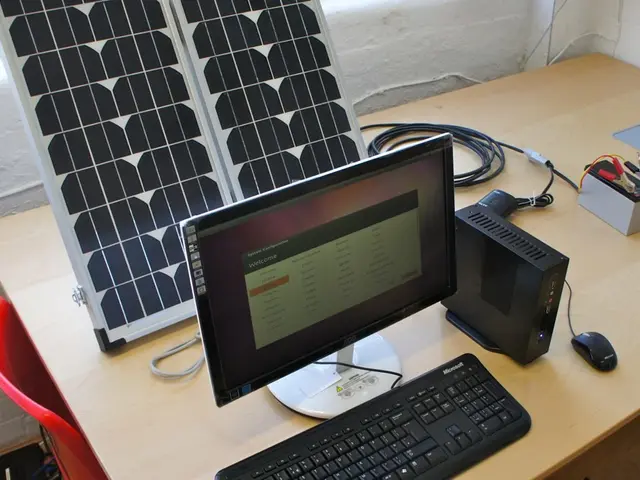Possibility of Virtual Power Plants Mitigating Intense Energy Zones in Local Power Networks?
PG&E, in partnership with various companies, is spearheading an innovative program called SAVE (Seasonal Aggregation of Versatile Energy). The goal of this project is to prove that virtual power plants (VPPs) can match local grid needs, potentially offering a more cost-effective solution than traditional methods.
In the SAVE program, PG&E and its partners are utilising Sunrun's batteries and Span's smart electrical panels to modify home energy consumption and provision, ensuring they align with the hour-by-hour constraints of the grid they're connected to. This approach could be cheaper than the conventional utility fix for distribution grid problems, which often involves overbuilding the system to prevent overloads, a practice that becomes increasingly expensive as electricity demand rises.
The SAVE program focuses on local distribution grids, which carry power from substations to neighbourhoods, homes, and businesses. These grids operate under a variety of conditions, including moments of peak demand that push some systems to their limits.
PG&E aims to enroll up to 1,500 residential customers with solar-charged batteries from companies including Sunrun and up to 400 customers with smart electrical panels from startup Span. Trevor Udwin, PG&E's VPP and grid optimization manager, stated that building trust is crucial. This means someone signing a commitment to deliver the grid relief needed during specific times, and a distribution planner changing their operations based on that commitment.
PG&E has built a Distributed Energy Resource Management System (DERMS) to manage EV charging hubs and utility-scale batteries. However, this system hasn't yet been integrated with the communications and controls technology PG&E is deploying with its SAVE partners. PG&E is interfacing with software from Lunar Energy and Tesla to control batteries, and with Span's software to keep whole-home energy use below certain thresholds.
The development and deployment of a DERMS system is crucial, as it can reliably coordinate interactions across low-voltage distribution networks. Few utilities have deployed this technology, but it could offer significant benefits, especially in light of the increasing costs associated with distribution grid investments in the US.
A recent analysis suggests that tapping California's nation-leading fleet of rooftop solar, backup batteries, and EVs for this task could save billions of dollars in grid upgrade costs. Using home batteries and energy controls to delay upgrading those grids could make a big dent in the high and rising costs of electricity in California.
The SAVE program is a pilot project, and PG&E hasn't started delaying upgrades on the parts of the grid it's testing yet. However, the SAVE project will inform next steps to start doing this kind of proactive, VPP-integrated grid planning at a larger scale.
In conclusion, the SAVE program represents a significant step forward in grid management technology. By harnessing the power of virtual power plants, PG&E aims to provide a more cost-effective solution to grid overloads, potentially saving billions of dollars in grid upgrade costs. The success of the SAVE program could pave the way for wider adoption of VPPs, revolutionising the way utilities manage their grids.
Read also:
- Aiming to simplify the move towards cleaner automobiles, the newly established ministry plans to take direct action with Pannier-Runacher, Létard, and Vautrin at the helm.
- "The imperfect yet essential documentary, "Planet of the Humans," raises challenging and uncomfortable inquiries"
- Exciting Escapades of Tintin
- More than half of British homes adhere to insulation standards established during the 1970s.








